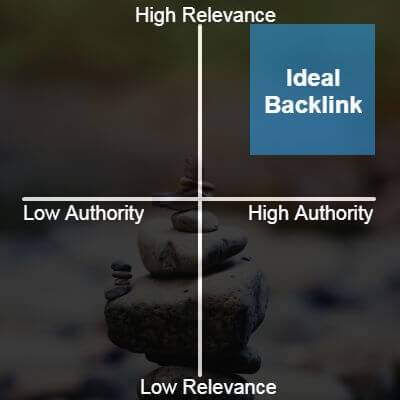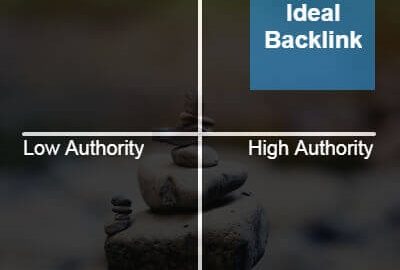— April 12, 2018

Your website can be a powerful traffic and lead generation tool for your small business. Unfortunately, building a pretty website will not get potential buyers to start visiting your site. To generate long-lasting, highly relevant, and free traffic, you have to learn how to improve your website SEO.
The idea of getting free eyes on your site each day seems almost too good to be true, and many small business owners are slow to warm up to the idea of focusing on SEO traffic generation.
“My target customers are too sophisticated to convert on a website.”
“Learning how to increase my SEO is too expensive and time-consuming to bother with.”
I’ve heard several different excuses, but the fact of the matter is – 89% of consumers turn to a search engine before making a purchase, according to a study by Brafton. You don’t necessarily have to close a lead on the web, but it’s a great place to start a conversation.
With this data in mind, let’s explore how to use SEO to increase traffic.
Create the Best Content Possible
Creating exceptionally good content is one of the absolute best ways to increase SEO for your website. If Google’s mission is to “Organize the world’s information and make it universally accessible and useful,” then having the most accessible and useful content from the start is the simplest way to rise to the top of the organic rankings.
One method for determining how to boost your SEO with quality content is to create in-depth articles.
Write In-depth Articles
Did you know that the average word count of a first page result on Google is 1,890 words? These results are typically long-form blog posts packed with educational content that ranks for keywords that closely align with searcher intent
One of the key pieces of learning how to blog for SEO, is to determine what searchers truly want to know when they search your target keywords. From there, your job is to deliver an exhaustive, skimmable article on the subject.
For example, if a Google users conducts a search for “best lawyer in [location],” you should closely examine the top search results before you craft your own page on the subject. To increase your SEO, your information needs to align with the intended goal behind that specific search.
You might find that the first result is a lawyer listing website that compares several attorneys in that location. The second and third results are attorney homepages from firms in that area. These homepages might have summaries of their practice areas, along with estimated hourly rates.
While crafting your own content, you will need to keep those high-performing competitors in mind. Is there any way you can compare yourself to the competition without sending your users away from your site? Making this comparison would help align your page’s intent with that of the first place result. You would also want to summarize your practice areas, and include ranges for your rates to stay on par with the current second and third place Google results for “best lawyer in [location].”
Aligning your page content with searcher intent will usually lead to a highly valuable, long-form page or blog post. One of the main benefits of having a blog for your business is that you have a logical platform for publishing in-depth articles that will be helpful to searchers and ultimately improve your SEO website traffic.
Capitalize on Low-Hanging Fruit
Another key aspect of learning how to improve website SEO is identifying low-hanging fruit.
Here are some rules of thumb to help you identify low-performing pages that aren’t benefiting your site’s SEO.
- Use SEMrush to filter out which keywords your site ranks for that are on the verge of improving to the next page of the SERPs (position #11 or #12 keywords).
- Use Screaming Frog to identify any broken or redirecting internal links, and resolve them.
- Use Screaming frog to identify any pages that have missing or multiple page titles, H1s, or oversized images.
Once you identify these quick wins, you can resolve any on-page errors, or even improve your struggling content by adding more quality text or rich media like relevant images or videos. Making enhancements to on-page and off-page SEO for these low performers will help improve the SEO traffic generation of your website as a whole.
Get in the Featured Snippet
If you have blog posts about high level educational topics on your website, you may want to try to take over the featured snippet at the top of the search results.

The featured snippet, sometimes called an “instant answer” or “postion zero,” is a box at the top of some informational search results that directly displays the answer to a user query without having to click on a post.
What’s the benefit of a featured snippet if the user doesn’t have to click into your post? Many times, the information in the snippet will be incomplete, so the user has to click through to your page anyway. Other times, the answer in the featured snippet simply qualifies that you know what you’re talking about, and the link to your page is now at the top of the SERPs.
You don’t even have to be ranked in the top position to also be listed in the featured snippet. This is one reason why many marketers find it helpful to optimize their content for the snippet instead of trying to rank #1 in the pure organic results. The instant answer boxes usually only appear for queries that have simple answers with minimal opinion.
How to Optimize for the Featured Snippet
To optimize your content to appear as a featured snippet, your main article title should address a “what is,” or “# steps,” query. Your h1, and your leading h2 should closely align with the target keyword. The paragraph that follows the h2 should be about 50 words, and succinctly address the query.
Every Page Should Have a Purpose for SEO
Letting keyword research inform which pages you create for your website is, in essence, identifying market demand before creating your piece of content.
Would you spend time and money to develop a product that doesn’t have any demand? Probably not. Similarly, you should not create web pages that aren’t informed by keyword research.
Uncovering demand before you supply content is critical to learning how to improve your website SEO. While using keyword research to inform your page creation will not land you guaranteed SEO results, it is a good place to start.
Write Consistently
When you write consistently, you signal to users and search engines that you’re a consistent source of information within your industry. If the goal of marketing is to stay top-of-mind when a member of your target audience is ready to buy, then consistently publishing content is only logical.
Guest Blog for Referral Traffic and Not Links
One of the most important approaches on how to improve your SEO traffic is guest blogging. When done correctly, this is one of the most effective (and popular) link building strategies in the industry.
The key is to craft high-quality content for other sites related to your industry that you’d be proud of publishing on your own website. If you reference any of the content assets (blog posts, eBooks, whitepapers) from your own website, feel free to link to them. However, you shouldn’t link to your site in a way that comes off spammy. Not only does this negatively affect the quality of your guest blog, but it will get you in trouble with Google as well.

While guest blogging, make sure you provide so much value that users will happily leverage the relevant resources you link to. When your post is helpful to readers first, SEO traffic generation will follow.
Don’t Become too Entrenched in Tactical SEO
The last tip on how to increase your SEO traffic: don’t focus too heavily on tactical level SEO.
While some segments of search engine optimization require tactical skills, like implementing schema markup or improving page speed, your content creation shouldn’t look like it’s written for robots.
The best content-focused SEO professionals can create website content in such a way that it includes well-researched keywords without the readability of the article deteriorating. When you become too entrenched in tactics, you seriously handicap your efforts toward improved SEO traffic generation.
For more information on increasing your site traffic, check out these 24 tips for making your website perform better.
Digital & Social Articles on Business 2 Community
(83)
Report Post



